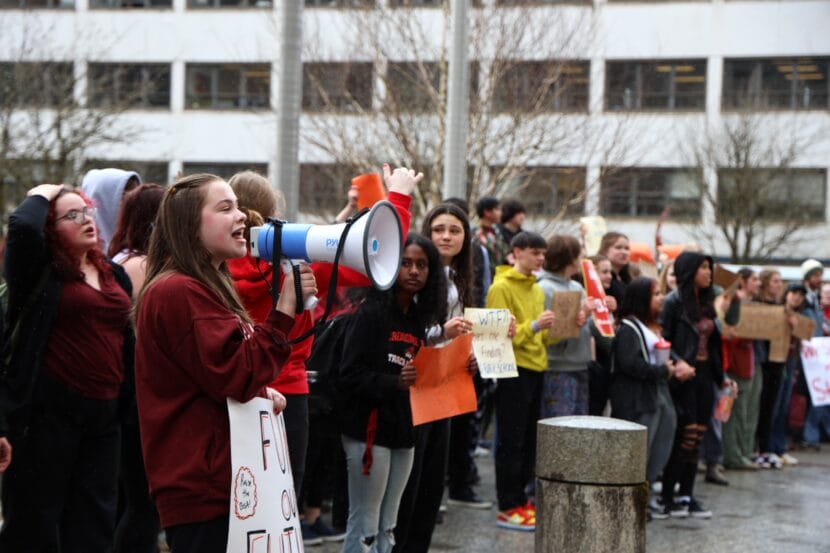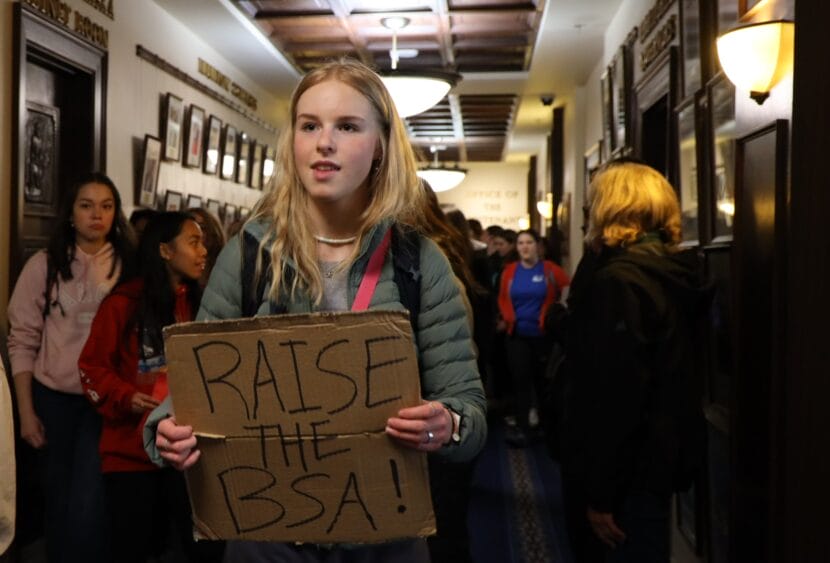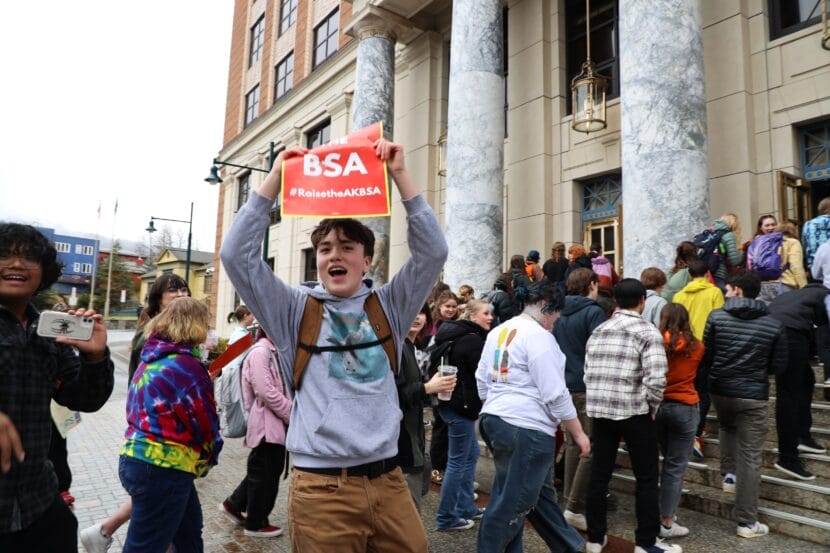Students from Juneau and across Alaska walked out of school on Thursday to protest Gov. Mike Dunleavy’s education funding veto last month.
The bill would have raised state education funding significantly for the first time in years. But lawmakers came up one vote short of overriding the governor’s veto.
Nearly 100 students from Juneau-Douglas High School: Yadaa.at Kalé left class to walk to the Alaska State Capitol.
JDHS senior Rachel Wood spoke into a megaphone, calling on the Governor and legislators who voted to sustain his veto to answer them.
“We demand the 20 legislators who voted no to come out here and tell us why they did that. Where are you? Where are you? Where are you?” she said.

Students then flooded inside the Capitol to confront them. But Fairbanks Democratic Sen. Scott Kawasaki said they were nowhere to be found.
“I suspect they’re hiding in their offices right now,” he said.
Students eventually managed to speak to Rep. Julie Coulombe, R-Anchorage, according to the Alaska Beacon.
Amid the protest, JDHS Senior Carmen Farr held a sign that said “Remember Article VII Section 1.” That’s the section in the Alaska constitution that mandates that the Legislature fund public schools.
“It’s the Legislature’s responsibility to maintain public school systems,” she said. “I think that the veto is kind of failing us there because we can see that it’s – everything’s kind of crumbling beneath us.”
The Juneau School District is facing a $10 million budget deficit next year. The bipartisan bill Dunleavy vetoed last month would have cut that in half, giving the district more than $5 million in additional state funding.
The district is relying on school closures and staff cuts to fill the budget gap. JDHS student Rain Bell said no matter what the Juneau School District did to fix the deficit, the quality of education was still going to decline without help from the state.
“We’re still losing,” Bell said. “There are kids who aren’t going to be able to get the resources they need and aren’t going to be able to succeed.”

Across town in the Mendenhall Valley, about 50 students walked out of Thunder Mountain High School.
The district’s school closure plan turns Thunder Mountain into a middle school and puts all ninth through twelfth graders at Juneau-Douglas High School: Yadaa.at Kalé.
Thunder Mountain freshman Harbor Whitton said increased state funding might have spared students from such drastic changes.
“It’s really heartbreaking, to be honest, because as a freshman here, I was planning to do my sports here, make friends here, graduate here like my friends and family have, and it’s just really upsetting because now we have to go to JD, the high schools are going to be combined, and it’s unfair, and we’re still going to be in debt,” she said.
Students are already feeling the effects of budget cuts this year. The district has put limits on printing and other supplies, and senior Lauren Stichert said teachers are worried about their jobs.
“It’s important to keep schools open,” she said. “It’s important to have teachers keep their jobs. It’s important to have supplies – I mean, we’ve been limited to six sheets of paper this year because there’s no money.”
And Thunder Mountain freshman Dalnoi Keaton said she’s disappointed in state leaders.
“Personally, right now, I don’t want to raise my kids in a state that has really bad decisions that are being made. We need education funding. It’s just a must,” she said.
House lawmakers have set aside the equivalent of a $680-per-student increase in the latest draft of the state’s operating budget. But even if that passes and survives the governor’s veto pen, it’s another round of one-time funding for education.






